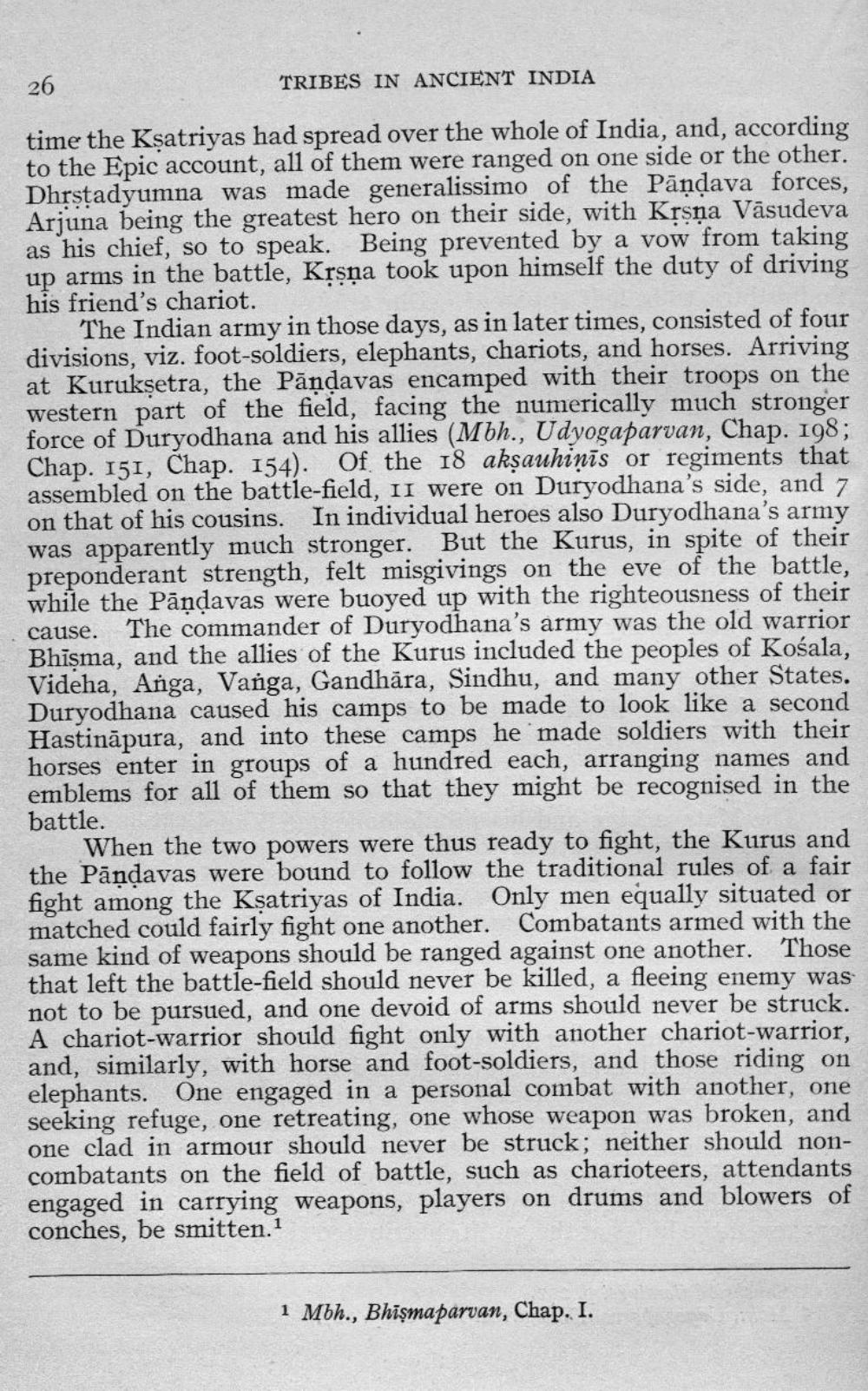________________
26
TRIBES IN ANCIENT INDIA
time the Ksatriyas had spread over the whole of India, and, according to the Epic account, all of them were ranged on one side or the other. Dhrstadyumna was made generalissimo of the Pandava forces, Arjuna being the greatest hero on their side, with Krsna Vásudeva as his chief, so to speak. Being prevented by a vow from taking up arms in the battle, Krsņa took upon himself the duty of driving his friend's chariot.
The Indian army in those days, as in later times, consisted of four divisions, viz. foot-soldiers, elephants, chariots, and horses. Arriving at Kuruksetra, the Pāņdavas encamped with their troops on the western part of the field, facing the numerically much stronger force of Duryodhana and his allies (Mbh., Udyogaparvan, Chap. 198; Chap. 151, Chap. 154). Of the 18 akşauhinīs or regiments that assembled on the battle-field, II were on Duryodhana's side, and 7 on that of his cousins. In individual heroes also Duryodhana's army was apparently much stronger. But the Kurus, in spite of their preponderant strength, felt misgivings on the eve of the battle, while the Pandavas were buoyed up with the righteousness of their cause. The commander of Duryodhana's army was the old warrior Bhīşma, and the allies of the Kurus included the peoples of Kośala, Videha, Anga, Vanga, Gandhāra, Sindhu, and many other States. Duryodhana caused his camps to be made to look like a second Hastināpura, and into these camps he made soldiers with their horses enter in groups of a hundred each, arranging names and emblems for all of them so that they might be recognised in the battle.
When the two powers were thus ready to fight, the Kurus and the Pandavas were bound to follow the traditional rules of a fair fight among the Ksatriyas of India. Only men equally situated or matched could fairly fight one another. Combatants armed with the same kind of weapons should be ranged against one another. Those that left the battle-field should never be killed, a fleeing enemy was not to be pursued, and one devoid of arms should never be struck. A chariot-warrior should fight only with another chariot-warrior, and, similarly, with horse and foot-soldiers, and those riding on elephants. One engaged in a personal combat with another, one seeking refuge, one retreating, one whose weapon was broken, and one clad in armour should never be struck; neither should noncombatants on the field of battle, such as charioteers, attendants engaged in carrying weapons, players on drums and blowers of conches, be smitten.1
1 Mbh., Bhīşmaparvan, Chap. I.




